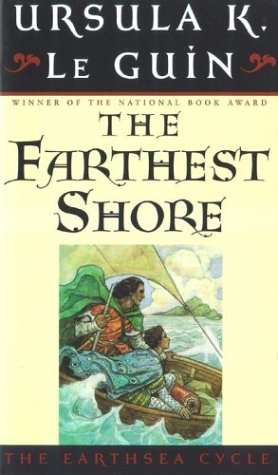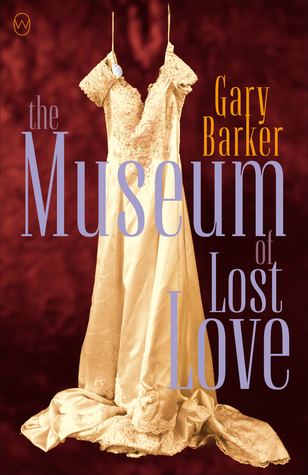It’s a shame that it took me until now to read this book, which is as old as I am. As I write this, my fortieth birthday looms only a few weeks ahead of me, and the third novel of Earthsea rings true for me in its depiction of the wizard Ged, a.k.a. Sparrowhawk, beginning to come down off the crest of his career. After a youth full of mighty deeds and daring quests, Ged has progressed so far as to be elected Archmage of Roke, as it were the Dumbledore of his world. Whether due to this more settled way of life, or the feeling of becoming old, or perhaps the sense of the destined ends for which he has striven finally coming together, this book finds Ged restless to sail out to the limits of the island-studded world of Earthsea. And it is the arrival on Roke of a young prince named Arren, bearing the disturbing news that magic is going out of the world, that gives the Archmage the chance he needs to embark on one last quest.
But this book imbibes more than the spirit of men at the height of their power, beginning to descend toward old age. In Arren, it also drinks of youth gaining experience, of boyhood turning into manhood, of hero-worship ripening into a loving companionship concocted of equal parts compassion, trust, and self-sacrifice. When LeGuin writes of Arren “falling in love” with Ged, she does so in the same sense in which T. H. White wrote of Lancelot falling in love with Arthur. Princeling offers himself to wizard as a servant, follows him as puppy follows master, and seems ready to give up even his own destiny as a ruler of the island of Enlad.
But as the pair sail out toward the bitter end of civilization, facing a succession of horrors that bear witness to an evil will bent on destroying all life, the direction of flow changes. Increasingly it appears that the wizard will use up the last of his wizardry to secure for his companion the throne of all Earthsea. And it is not magic alone, but also the boy’s strength of body and spirit to master adversity, to face death, and to fight for life both for himself and his friend—no longer “master”—that will restore the Balance that preserves the magical world of Earthsea.
I read the first two books of this series, A Wizard of Earthsea and The Tombs of Atuan, almost a decade ago. At that time, I think I was discouraged from continuing the series because of the rumor that the books became increasingly tied up in Taoist mysticism and/or feminist ideology. I am glad to say these rumors do no justice to this beautiful book, which concludes what was once considered the “Earthsea Trilogy”—though there are now two more novels (written much later) and an anthology of short stories to go with it. On the other hand, I am sad to think I missed out so long on what really could be the most beautifully written book I have read this year.
In mythopoeic world-building, Ursula LeGuin is easily the equal of J. R. R. Tolkien. In economy of words—this magnificent book being a mere 259 pages long—she has no equal. In a work of fantasy that almost obliterates the boundary between prose and poetry, this book could almost be sung. And when it ends, it leaves one with a wistful feeling, as though one wished to re-enter its strange, wonderful realm and stay there a while longer. To do so, one will have to explore the later books of this series—Tehanu, The Other Wind, and Tales from Earthsea—regardless of the rumor that their author had lost her feel for Earthsea by the time she wrote them. Maybe, when magic does drain out of a world, memory can pour it back in.



